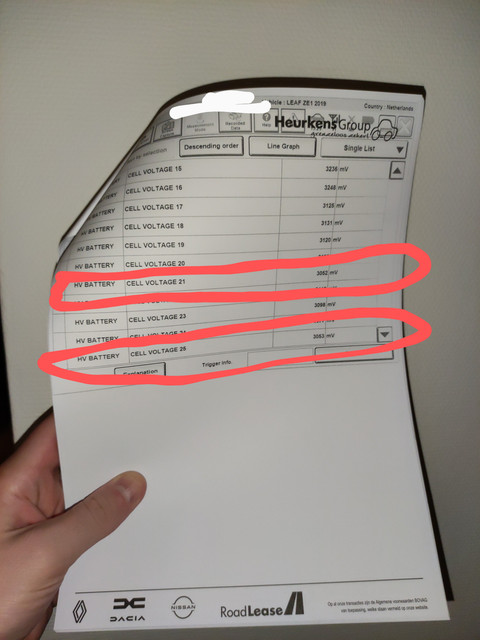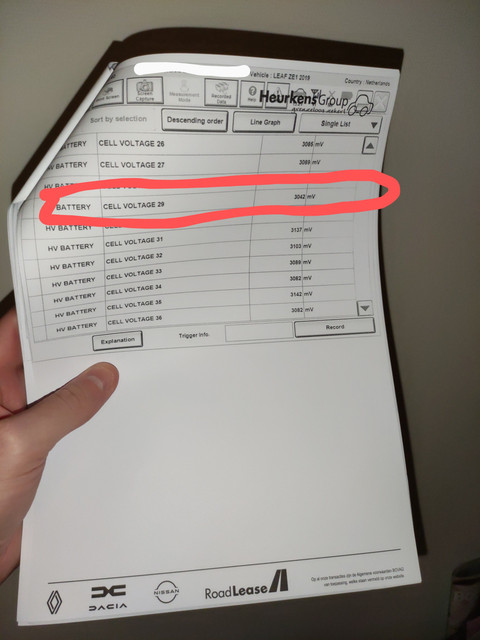Oostenrijker
Well-known member
- Joined
- Jul 19, 2023
- Messages
- 122
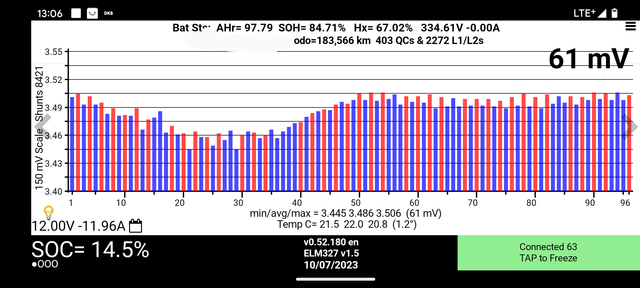
I was doing a third party battery diagnostic test this week, and I wasn't able to see Leaf Spy during driving. Because of the third party ODB2 battery diagnostic device.
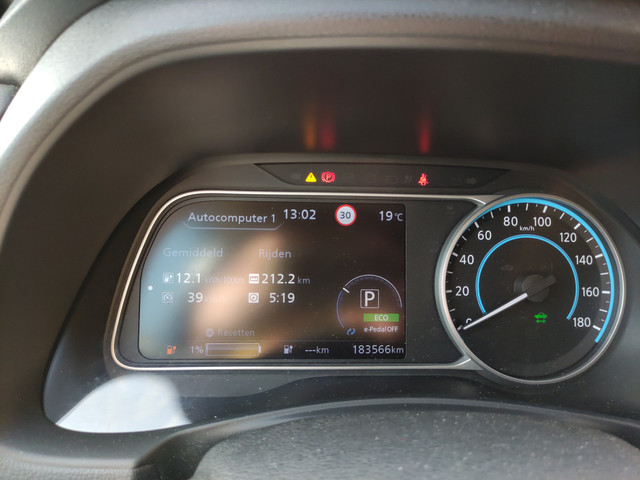
After driving 212km's I reached 1% dash SoC and decided, this was far enough. As I had no idea of how low the battery SoC actually was. It turned out it was 14.5% and the abruptly drop in SoC this time did not happen at 8% SoC. But at 30% dash SoC, it all off a sudden dropped to 26% dash SoC when I got on the highway.
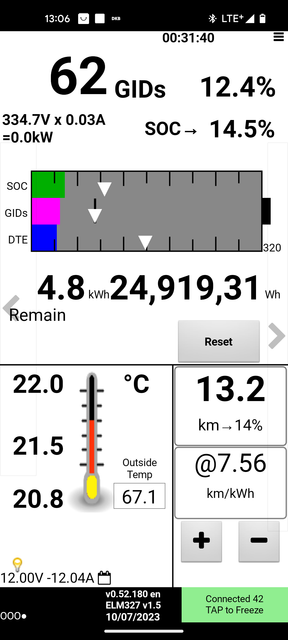
On ending the third party battery diagnostic test, I still had 4.8kWh left. According to my previous findings, about 4kWh I can't use. So to be on the safe side, I calculated 4.5kWh. Because my 40kWh battery, still has about 32.5kWh left. So I can use maximum 28kWh of that.
It just suprise me, this time no weak cell's showed: which I guess, can be explained because I didn't drive the battery empty in one go. So the BMS might have balanced it, between the trips I did the last couple of days.
But atleast I'm less concerned now: next Wednesday, I will get a battery test from Nissan. So then I will drop it with an low as possible SoC, which I can see when using Leafspy. But when not needed, I won't go below 10% dash SoC.
PS I haven't gotten the results from the third party battery diagnostic test yet: that will also calculate the SoH.





